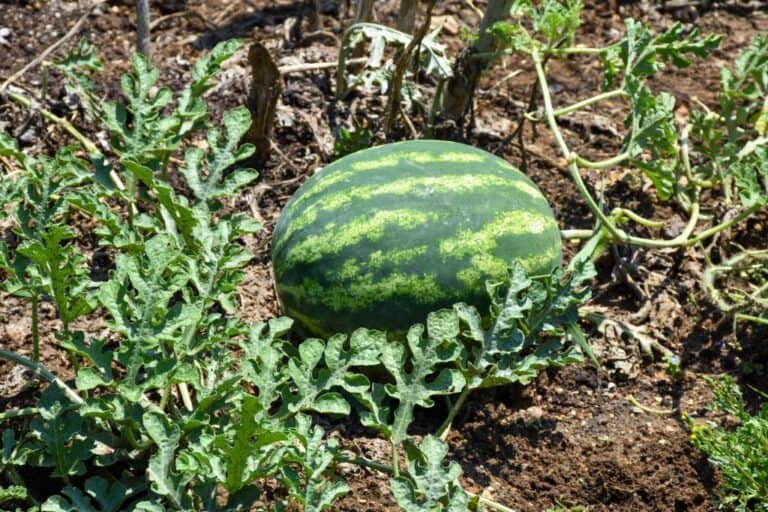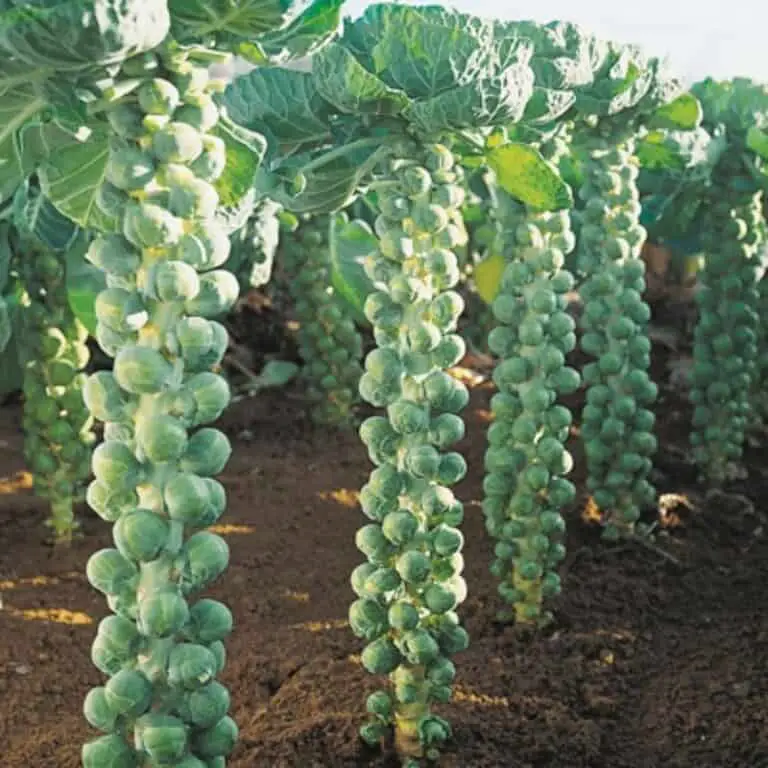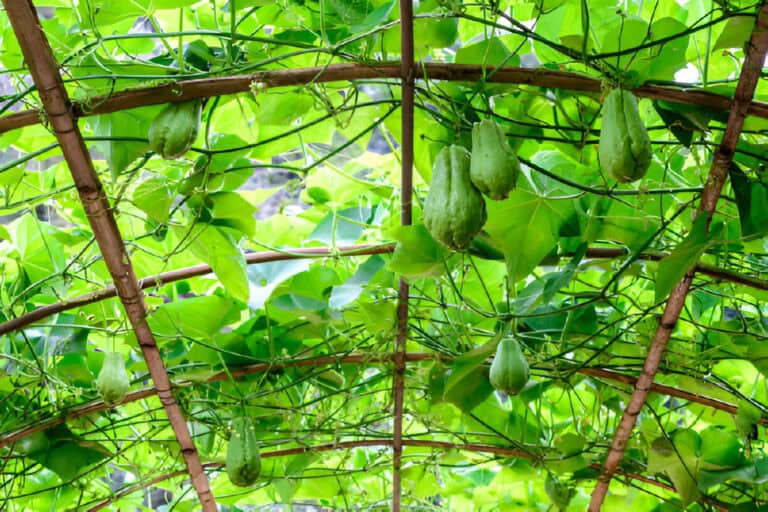What Parts Of The Broccoli Plant Are Edible? From Florets to Stalks

Broccoli, with its vibrant green florets and undeniable nutritional value, has become a staple in kitchens worldwide. We all know and love those delicious florets, but have you ever wondered if there’s more to this cruciferous superstar? Well, the answer is a resounding “yes”! The broccoli plant is a treasure trove of edible goodness that extends beyond its famous florets.
In this article, we will explore the various edible parts of the broccoli plant, discuss optimal harvesting and preparation techniques, delve into the health benefits associated with consuming broccoli, and explore different cooking techniques that can be used to bring out its delicious flavors.
Prepare to be amazed as we delve into the world of broccoli, discovering the culinary potential of its leaves, the delicate blossoms that grace its presence, and even the young and tender microgreens.
Overview of the Broccoli Plant
Broccoli, a member of the cabbage family, is a remarkable plant that captivates both the eyes and the taste buds. Its scientific name, Brassica oleracea var. italica, may sound daunting, but this vegetable’s appeal extends far beyond its botanical classification. With its vibrant green florets that tightly cluster on a sturdy, edible stalk, broccoli stands tall as a symbol of health and vitality.
When you set your sights on a head of broccoli, you can’t help but marvel at its rich green hue. The compact florets, also known as “buds,” are tightly packed together, forming a picturesque canopy.
Each floret is composed of tiny flower buds that haven’t fully blossomed, lending broccoli its distinctive appearance. This unique structure is what sets broccoli apart from other members of the Brassica family, such as cauliflower or kale.
Beyond its visual allure, broccoli boasts an impressive nutritional profile that places it at the forefront of healthy eating. Packed with essential vitamins, minerals, and dietary fiber, this vegetable provides a multitude of health benefits.
Read: What Do Broccoli Plants Look Like When They’re Growing?
Edible Parts of the Broccoli Plant
1. Broccoli Florets
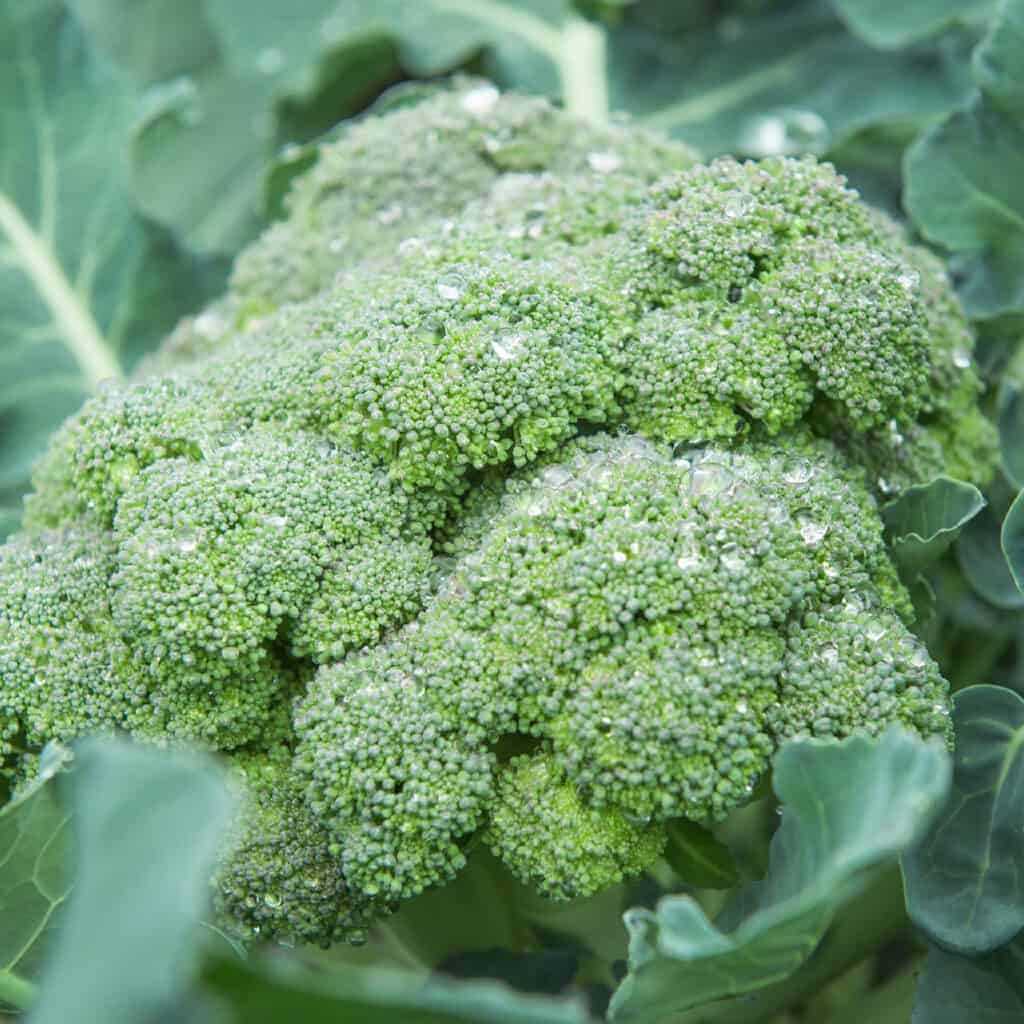
The florets are the most commonly consumed part of the broccoli plant. These miniature, tree-like structures are packed with flavor and offer a delightful texture. They are rich in essential vitamins and minerals, including vitamin C, vitamin K, folate, and potassium. When cooked, the florets become tender and slightly crisp, making them ideal for various culinary creations.
Culinary uses and recipes for broccoli florets:
- Steam the florets until they are tender but still retain their vibrant color. Serve them as a simple side dish or add them to stir-fries and salads.
- Roast the florets with a drizzle of olive oil, salt, and pepper for a crispy and flavorful addition to your meals.
- Incorporate the florets into pasta dishes, quiches, or frittatas for added nutrition and a burst of color.
2. Broccoli Stalks
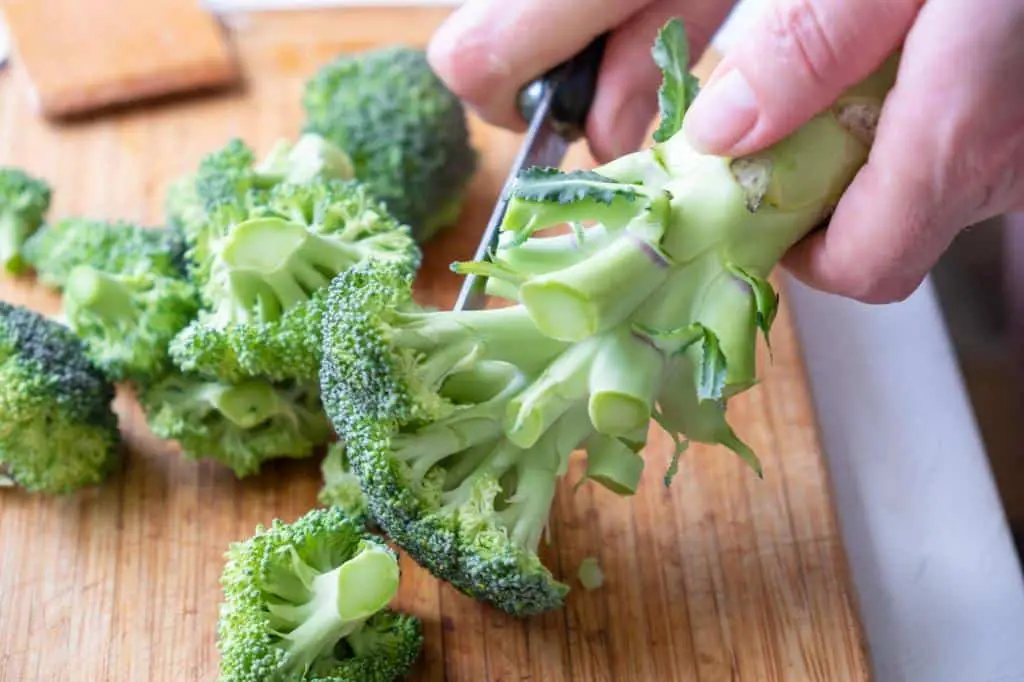
While often overlooked, the stalks of the broccoli plant are also edible and offer a unique texture and flavor. The stalks are firm, mildly sweet, and have a slightly fibrous texture. They are an excellent source of dietary fiber, vitamin C, and vitamin B6.
Culinary uses and recipes for broccoli stalks:
- Peel the outer fibrous layer of the stalks and chop them into thin slices. Use them in stir-fries or sautés for added crunch and flavor.
- Grate the stalks and incorporate them into coleslaws or vegetable patties for a nutritious twist.
- Steam or roast the stalks until tender, then puree them to create a creamy and flavorful soup.
3. Broccoli Leaves

The leaves of the broccoli plant are often underutilized, but they offer a unique taste and texture. They are tender and have a mild, slightly bitter flavor. Broccoli leaves are a good source of vitamin A, vitamin C, and calcium.
Culinary uses and recipes for broccoli leaves:
- Use the leaves as a nutritious replacement for lettuce in salads or as a base for wraps and rolls.
- Sauté the leaves with garlic and olive oil for a quick and healthy side dish.
- Incorporate the leaves into soups or stews to add a vibrant green color and a subtle flavor.
Read: Do Broccoli Plants Keep Producing More Than Once?
4. Broccoli Flowers
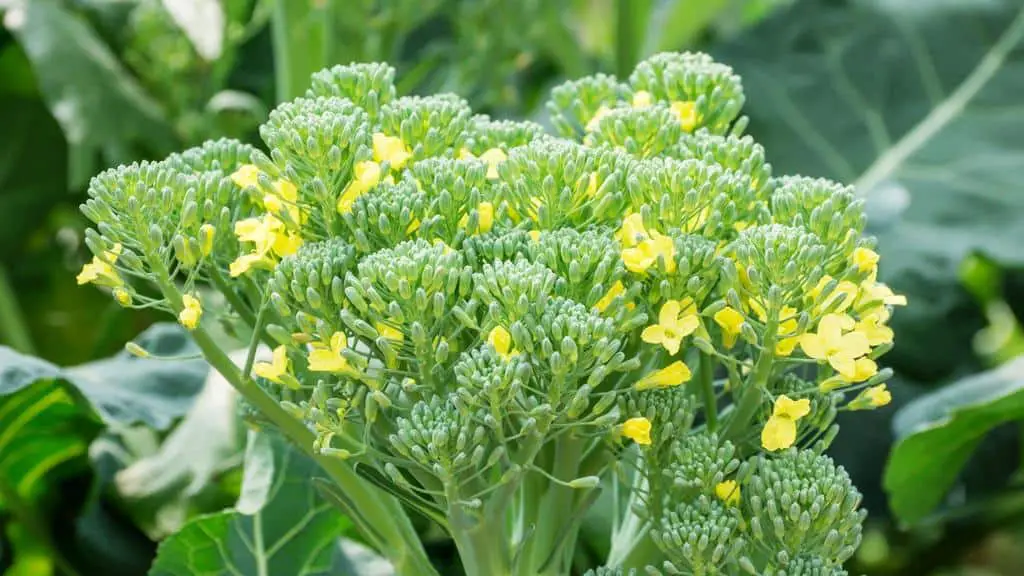
In addition to the florets, the yellow flowers that bloom on the broccoli plant are also edible. These delicate blossoms offer a sweet and mild flavor, often with a hint of spiciness. While not as commonly consumed as the florets or leaves, they can be a delightful addition to salads, garnishes, or as a decorative element in various dishes. Harvesting the flowers at their peak ensures the best taste and texture.
5. Broccoli Microgreens
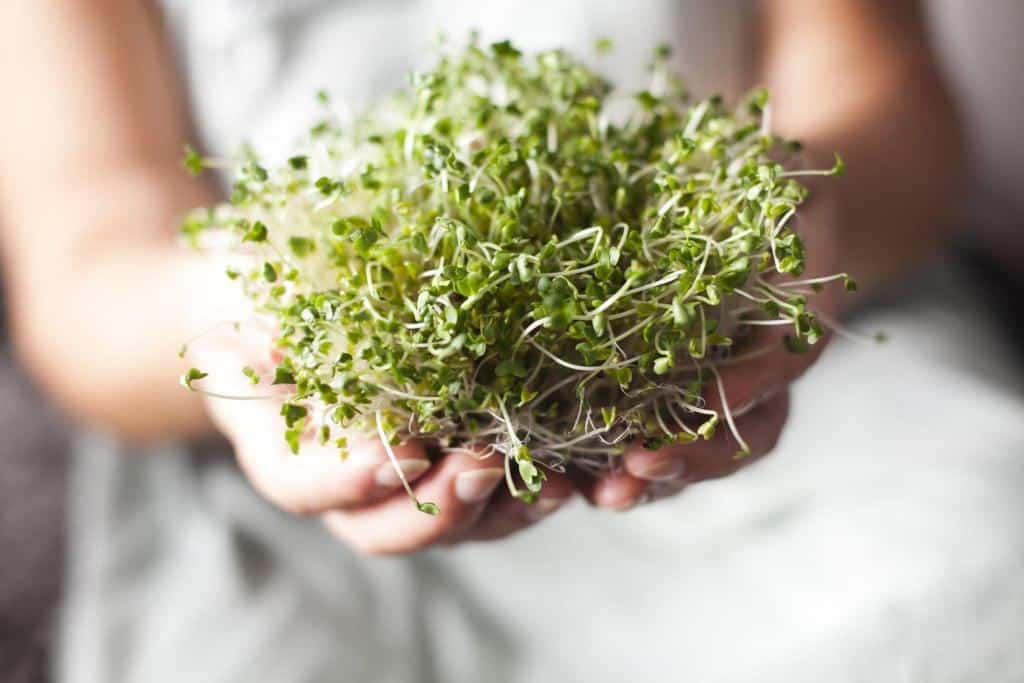
Microgreens, the young and tender seedlings of plants, have gained popularity for their intense flavors and concentrated nutritional profiles. Broccoli microgreens are no exception. These miniature versions of the broccoli plant pack a powerful punch and can be enjoyed raw as a topping for sandwiches, salads, or as a garnish for various dishes. Their crisp texture and concentrated flavor make them an excellent addition to any culinary creation.
To summarize, here’s a table highlighting the different edible parts of the broccoli plant and their culinary uses:
| Part | Culinary Uses |
| Florets | Steamed, boiled, stir-fried, roasted, added to salads |
| Stalks | Sliced, steamed, stir-fried, grated for coleslaw or patties |
| Leaves | Steamed, sautéed, blanched, added to soups, stews, salads |
| Flowers | Salads, garnishes, decorative element in dishes |
| Microgreens | Microgreens | Raw as a topping for sandwiches, salads, or garnish |
Harvesting and Preparing Broccoli
To enjoy the freshest and most flavorful broccoli, it is essential to harvest broccoli at the right time and handle it properly. The optimal harvesting time for broccoli is when the florets are tight and compact, before they start to separate or turn yellow.
Harvesting should be done in the morning, when the plants are hydrated and temperatures are cooler.
Proper techniques for harvesting broccoli:
- Using a sharp knife or shears, cut the main head of broccoli approximately five to six inches below the head, ensuring that a portion of the stalk is left intact.
- Once the main head of broccoli is harvested, smaller side shoots will continue to develop. Monitor the plant regularly and harvest these side shoots when they reach a suitable size, ensuring a continuous supply of fresh broccoli.
After harvesting, handle broccoli with care to maintain its quality and flavor. Start by removing any damaged or discolored broccoli leaves. Rinse the broccoli under cold water to remove any dirt or debris.
To store it, wrap the broccoli loosely in a damp paper towel and place it in a perforated plastic bag or airtight container in the refrigerator. Properly stored, broccoli can stay fresh for up to a week.
Read: What To Do With A Broccoli Plant After Harvest?
Health Benefits of Eating Broccoli
Eating broccoli provides numerous health benefits due to its impressive nutritional content. Here are some key advantages to including broccoli in your diet:
- Rich source of vitamins and minerals: Broccoli is loaded with essential vitamins and minerals, including vitamin C, vitamin K, folate, and potassium. These nutrients play a vital role in maintaining overall health and supporting various bodily functions.
- High in antioxidants and phytochemicals: Broccoli contains powerful antioxidants, such as sulforaphane, glucoraphanin, and quercetin. These compounds help protect the body against oxidative stress, reduce inflammation, and promote cellular health.
- Potential cancer-fighting properties: Broccoli belongs to the cruciferous vegetable family, known for its potential cancer-fighting properties. Studies suggest that the compounds found in broccoli may help inhibit the growth of cancer cells and reduce the risk of certain types of cancer, including breast, prostate, and colorectal cancer.
Cooking Techniques for Broccoli
Broccoli is a versatile vegetable that can be cooked using various methods, each offering a unique flavor and texture. Here are four popular cooking techniques for broccoli:
- Steaming: Steaming broccoli helps retain its vibrant color, texture, and nutritional value. Place the florets in a steamer basket and steam for about 5-7 minutes until they are tender but still slightly crisp. Season with a pinch of salt and pepper, or drizzle with a light dressing for added flavor.
- Boiling: Boiling broccoli is a quick and easy method. Bring a pot of water to a boil and add the florets. Cook for 3-4 minutes until they are tender. Drain the broccoli and serve as a side dish or use it in salads, soups, or stir-fries.
- Roasting: Roasting broccoli enhances its natural sweetness and adds a delicious caramelized flavor. Preheat the oven to 425°F (220°C). Toss the florets with olive oil, salt, and pepper, then spread them in a single layer on a baking sheet. Roast for 20-25 minutes, turning once halfway through, until the edges are golden brown and crispy.
- Stir-frying: Stir-frying broccoli quickly cooks it while preserving its vibrant color and crispness. Heat a tablespoon of oil in a wok or large skillet over high heat. Add the broccoli florets, along with other desired vegetables and seasonings. Stir-fry for 2-3 minutes until the broccoli is tender-crisp. Serve as a side dish or as a base for stir-fry noodles or rice.
Experimenting with different cooking techniques can help you discover your favorite way to enjoy the flavors and textures of broccoli.
When it comes to cooking broccoli, the choice of technique can greatly influence the taste and texture of the final dish. Steaming retains its vibrant color and crispness, while boiling provides a quick and easy option. Roasting brings out the natural sweetness and creates a delightful caramelized flavor, while stir-frying preserves its vibrant color and adds a hint of crunch.
In addition to the cooking techniques mentioned, there are other creative ways to enjoy broccoli. You can incorporate it into casseroles, soups, or even blend it into a creamy broccoli soup or pesto sauce. Broccoli can also be pickled for a tangy and refreshing twist, or added to smoothies for a nutrient boost.
To help you visualize the information presented, here’s a summary table:
| Edible Parts of the Broccoli Plant | Description and Characteristics | Culinary Uses and Recipes |
| Florets | Miniature tree-like structures | – Steam as a side dish<br>- Roast for a crispy addition<br>- Incorporate into pasta dishes, quiches, or frittatas |
| Stalks | Firm with a mild sweetness | – Slice and use in stir-fries or sautés<br>- Grate and incorporate into coleslaws or vegetable patties<br>- Steam or roast for soups or purees |
| Leaves | Tender with a mild bitterness | – Use as a replacement for lettuce in salads or as wraps<br>- Sauté with garlic and olive oil<br>- Add to soups or stews for color and flavor |
Whether you’re a fan of the florets, stalks, or leaves, each part of the broccoli plant offers its own unique taste and nutritional benefits. Experimenting with different cooking techniques and recipes can open up a world of culinary possibilities. From simple side dishes to complex main courses, broccoli can be a star ingredient in a wide range of dishes, adding both flavor and nutritional value.
Broccoli Byproducts and Alternative Uses
Aside from the commonly consumed florets and stalks, there are other parts of the broccoli plant that can be utilized in different ways:
Broccoli stems as vegetable stock
The thick and fibrous stems of broccoli, often discarded, can actually be used to make flavorful vegetable stock. Simply save the stems and combine them with other vegetable scraps, such as onion peels, carrot tops, and celery ends. Simmer them in water for an hour or two, then strain the liquid to use as a base for soups, stews, or risottos.
Broccoli leaves in salads and stir-fries
Broccoli leaves, which are tender and have a mild bitterness, can be a great addition to salads and stir-fries. Treat them like any other leafy green vegetable—wash them thoroughly, remove the tough stems, and tear them into bite-sized pieces. Their slightly bitter flavor adds a pleasant contrast to the other ingredients in the dish.
Broccoli stems and leaves in juicing
If you’re into juicing, consider adding broccoli stems and leaves to your recipes. They are rich in nutrients and can provide an extra boost of vitamins and minerals to your juices. Juice them along with other fruits and vegetables for a refreshing and nutritious beverage.
Read: Broccoli Plants Falling Over: Common Causes and How to Prevent Them
Broccoli Varieties and Their Edibility
Broccoli comes in different varieties, each with its own unique characteristics and flavors. Here are some common broccoli varieties and their edibility:
| Variety | Description | Edibility |
| Calabrese | The most common variety with a large head | Both the florets and stalks are edible |
| Romanesco | Distinctive with its fractal patterned head | Both the florets and stalks are edible |
| Sprouting | Smaller heads and more side shoots | Both the florets and side shoots are edible |
| Broccolini | Resembles broccoli with smaller florets and long, thin stalks | Both the florets and stalks are edible |
| Purple Sprouting | Purple-hued florets with a sweeter taste | Both the florets and stalks are edible |
Differences in taste and texture can vary among broccoli cultivars, allowing for diverse culinary experiences. Experimenting with different varieties can add excitement and novelty to your meals.
Broccoli in Culinary and Dietary Contexts
Broccoli’s versatility extends beyond its traditional culinary uses. Here are some additional contexts in which broccoli is celebrated:
Broccoli in international cuisines
- In Italian cuisine, broccoli is commonly used in pasta dishes like orecchiette with broccoli rabe.
- Chinese cuisine incorporates broccoli in stir-fries, noodle dishes, and hearty vegetable soups.
- Indian cuisine features broccoli in curries, such as the popular dish called broccoli masala.
Broccoli in vegetarian and vegan diets
- Due to its nutritional profile and versatility, broccoli is a staple in vegetarian and vegan diets.
- It provides a good source of protein, fiber, and essential vitamins and minerals.
- Broccoli can be used as a main ingredient in plant-based dishes like stir-fry, roasted vegetable medleys, and vegan lasagna.
Broccoli as a versatile ingredient in various dishes
- Broccoli adds texture, flavor, and nutritional value to a wide range of dishes, including casseroles, salads, and quiches.
- It can be steamed and served as a simple side dish or blended into creamy soups and purees.
- Broccoli pairs well with a variety of other ingredients, such as garlic, lemon, Parmesan cheese, and almonds, enhancing the overall taste and appeal of the dish.
Conclusion
In conclusion, the edible parts of the broccoli plant extend beyond the familiar florets and stalks, including the stems and leaves that can be repurposed in creative ways. The various broccoli varieties offer unique tastes and textures, adding diversity to our culinary experiences. Broccoli holds historical significance, boasts interesting facts, and is celebrated in festivals around the world. It finds its place in international cuisines, vegetarian and vegan diets, and a wide array of dishes. As we savor the deliciousness of broccoli, we must also consider the environmental impact and sustainable cultivation practices associated with this remarkable vegetable. So, explore the different parts of the broccoli plant, unleash your culinary creativity, and embrace the many dimensions of this versatile and nutritious vegetable.
FAQs
Are only the florets of the broccoli plant edible?
No, the broccoli plant offers more than just the florets. The stalks, leaves, flowers, and even microgreens are all edible and offer unique flavors and culinary possibilities.
Can you eat raw broccoli?
Yes, raw broccoli can be consumed. It offers a satisfying crunch and retains its nutritional value when eaten raw. You can enjoy it as a standalone snack, add it to salads, or use it as a dipper for your favorite healthy dips.
What are some alternative uses for broccoli stems and leaves?
Broccoli stems and leaves have versatile uses. You can slice the stems and use them in stir-fries or grate them for coleslaw. Broccoli leaves can be cooked like other leafy greens and added to soups, stews, or even used as a replacement for lettuce in salads.
What is the best way to cook broccoli to retain its nutritional value?
To retain the maximum nutritional value of broccoli, it’s best to lightly steam or stir-fry it. These cooking methods help preserve the vitamins, minerals, and antioxidants present in the vegetable. Avoid overcooking, as prolonged heat exposure can lead to nutrient loss.
Can you freeze broccoli for future use?
Yes, you can freeze broccoli for future use. Blanch the florets and stems in boiling water for a short time, then transfer them to an ice bath to halt the cooking process. Drain and package the blanched broccoli in airtight containers or freezer bags before freezing. Properly stored, frozen broccoli can maintain its quality for several months.
Is it safe to consume large amounts of broccoli regularly?
While broccoli is highly nutritious, consuming excessive amounts may lead to gastrointestinal discomfort for some individuals. It contains compounds that can interfere with nutrient absorption when consumed in excess. It’s generally recommended to enjoy a varied diet and consume broccoli in moderation as part of a balanced eating plan. Consulting with a healthcare professional or nutritionist is advisable for personalized dietary recommendations.


